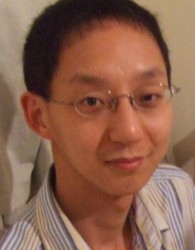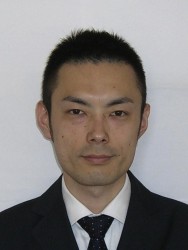
Tutorial Course
| Date: | May 20, 2013 |
| Place: | Ground Floor @ Conference Venue |
| Time: | 13:00 - 17:00, PM |
Randomised Forests and Tree-structured Algorithms in Computer Vision
Lecturer: Prof. Tae-Kyun Kim (Imperial College London, UK)

Abstract:
Many computer vision tasks can be cast as large-scale classification problems, where extremely efficient and powerful classification methods are pursued for real-time performance. Randomised Decision Forest is an emerging technique in relevant fields, being highly successful for various real-time vision solutions. It roots to tree and ensemble learning. A hierarchical tree structure has many short paths, accelerating evaluation time, while ensemble learning with randomisation ensures smooth decision regions for good generalisation to unseen data. On the other hand, Boosting as a representative ensemble learning technique has been a standard method in a computational demanding task, e.g. object detection. A boosting algorithm with simple weak learners can be seen as a flat structure and many developments including a Boosting cascade for time-efficient classification as a tree structure. In this tutorial, we review Randomised Decision Forests and tree-structured methods with comparative and insightful discussions. The tutorial begins with gentle introductions and motivations, and presents Boosting and tree structured classifiers in the first part. In the second part, following concepts and principles of Random Forest, its applications are demonstrated for challenging novel problems: real-time action and 3D posture recognition, object phenotype recognition, pedestrian detection and etc., all of which we recently tackled at Imperial College London jointly with Univ. of Cambridge. More information is found at http://www.iis.ee.ic.ac.uk/icvl.
Schedule:
- 50 min: Boosting and Tree-structure Classifiers
- 10 min: break
- 50 min: Randomised Forest and Its Applications
- 10 min: Q&A
Large Scale Structure from Motion and Localization
Lecturer: Dr. Akihiko Torii (Tokyo Institute of Technology, Japan)

Abstract:
3D reconstruction from a sequence of images as well as a collection of unorganized images is getting a feasible task according to the recent advancement of incremental structure from motion pipelines based on wide baseline feature matching and bundle adjustment. Furthermore, a city scale reconstruction is brought by the efficient fusion with the image retrieval techniques. This tutorial first reviews the fundamental theories and algorithms for accomplishing incremental structure from motion. Next, we explain the framework for achieving the large-scale reconstruction while introducing the basics of image search techniques. Finally, we show some recent trends and applications w.r.t. the structure from motion.
Schedule:
- 40 min: Basic theories and algorithms
- 10 min: break
- 20 min: SfM in large part I
- 20 min: SfM in large part II
- 10 min: Q&A
- 20 min: Applications and demonstrations

